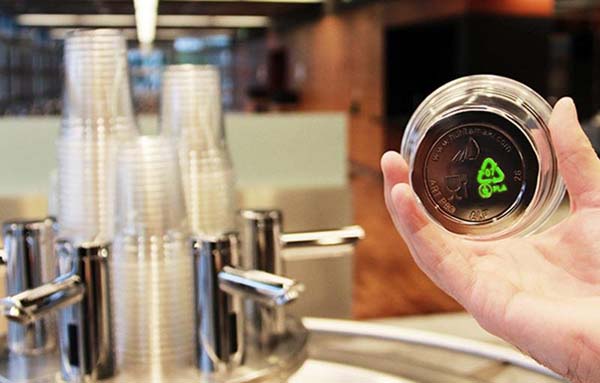Swiss Researchers Create New Nanofiber Eco-Friendly Plastic from Biofuel Waste
![]() Print this Article | Send to Colleague
Print this Article | Send to Colleague
According to a January 9 editorial published by the Ontario Bioproducts Co., Guelph, Ont., Canada, in a breakthrough that may benefit two different eco-friendly technologies, a group of Swiss researchers have discovered a way to make biodegradable plastic from a pesky waste product of biofuels.
These biofuels are made from various renewable sources that include plant stalks, fast growing sugar cane, wood waste – including residue and sawdust, and wood chips that can grow back through what are now more internationally managed and sustained forests. Fast growing forests provide not only renewable energy, but absorb carbon in the process.
The market for PLA, a form of plant-derived, biodegradable plastic that’s already being used in food packaging, is projected to grow from 360,000 metric tons in 2013, to more than 1.2 million metric tons by 2020. But PLA is derived from plants such as corn, sugar, and tapioca roots (depending on the region). So making megatons of plant-based plastic might mean setting aside millions of acres of land that could otherwise be used to grow food.

But a group of researchers at the Institute of Chemical and Bioengineering at the university ETH Zürich, led by professors Konrad Hungerbühler and Javier Pérez-Ramírez, have outlined a new process for making PLA using glycerol, a waste byproduct of biofuel production. According to the work, recently published in the journal Energy & Environmental Science, this technique saves energy by using a product that is otherwise commonly disposed of in rivers or fed to livestock (despite concerns over its effects), while also producing 20% less carbon dioxide than traditional methods.
Rather than using fermentation to create PLA, as is commonly done, the researchers teamed up with scientists from the university’s Advanced Catalysis Engineering group to create a custom catalyst. Made from a microporous mineral, and developed in large part by Pierre Dapsens, a PhD student working with Pérez-Ramírez, the catalyst's structure specifically promotes the desired chemical process.
Of course, with the rising demand for bioplastic, this method wouldn’t be all that useful if the amount of available waste glycerol couldn’t keep pace. But Cecilia Mondelli, a senior scientist at the Advanced Catalysis Engineering group at ETH Zurich and one of the paper’s coauthors, says that shouldn’t be a problem. According to Mondelli, biodiesel production is expected to reach nearly 40 million metric tons by 2020, and that crude glycerol waste will make up roughly 10% of that weight. "For the moment," she says, "all forecasts indicate biodiesel production will increase, and the amount of crude glycerol available will be higher and higher."
Even if the bioplastic market booms thanks to this new method, there will still be a substantial need for petroleum-based plastics for the foreseeable future. PLA (at least in its current form) doesn’t handle high temperatures well. So don’t expect it to show up in your coffee cup or microwavable food container anytime soon.


